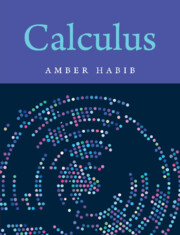Book contents
Summary
The decimal expansion of a real number is an instance of an infinite series. For example, 3.14159 … can be viewed as the sum of the series created by its digits: . The convergence of such a series is established by a comparison with the geometric series å¥n=0 1/10n. Isaac Newton realized that by replacing the powers of 1/10 with powers of a variable x, one can create real functions that can be easily manipulated in analogy with the rules of decimal expansions. He developed rules for their differentiation and integration as well as a method for expanding inverse functions in this manner. Today's historians believe that for Newton, calculus consisted of working with these “power series.” (See Stillwell [32, pp 167–70].) In this approach, the main task is to express a given function as a power series, after which it becomes trivial to perform the operations of calculus on it. In the first two sections of this chapter we shall study the general properties of power series, and then the problem of expressing a given function as a power series.
A century after Newton, Joseph Fourier replaced the powers xn with the trigonometric functions sinnx and cosnx to create new ways of describing functions. The “Fourier series” could model much wilder behavior than power series, and forced mathematicians to revisit their notions of what is a function, and especially the definition of integration.We give a brief introduction to this topic in the third section.
In our final section, we introduce sequences and series of complex numbers. These bring further clarity to power and Fourier series, and even unify them through the famed identity of Euler: eix = cos x + i sin x.
Power Series
Let us recall our study of Taylor polynomials in §6.3. Given a function f that can be differentiated n times at x = a, we define the Taylor polynomial
Tn is intended to be an approximation for f near x = a, with the hope that the approximation improves when we increase n. These hopes are not always realized, but in many cases they are. (The remainder theorem gives us a way to assess them.) It is natural to make the jump from polynomials to series, and consider the expression
The questions that arise here are: (a) For which x does this series converge, and (b) When it converges, does it sum to f (x)? To tackle these questions, we initiate a general study of series of this form.
- Type
- Chapter
- Information
- Calculus , pp. 307 - 350Publisher: Cambridge University PressPrint publication year: 2023



